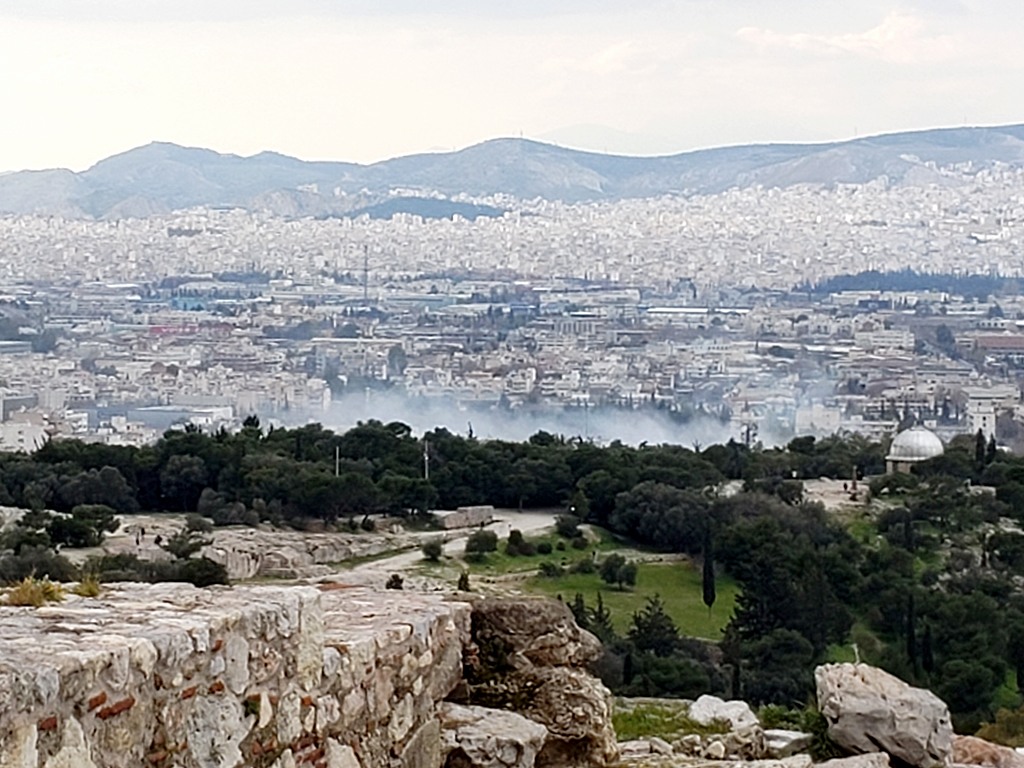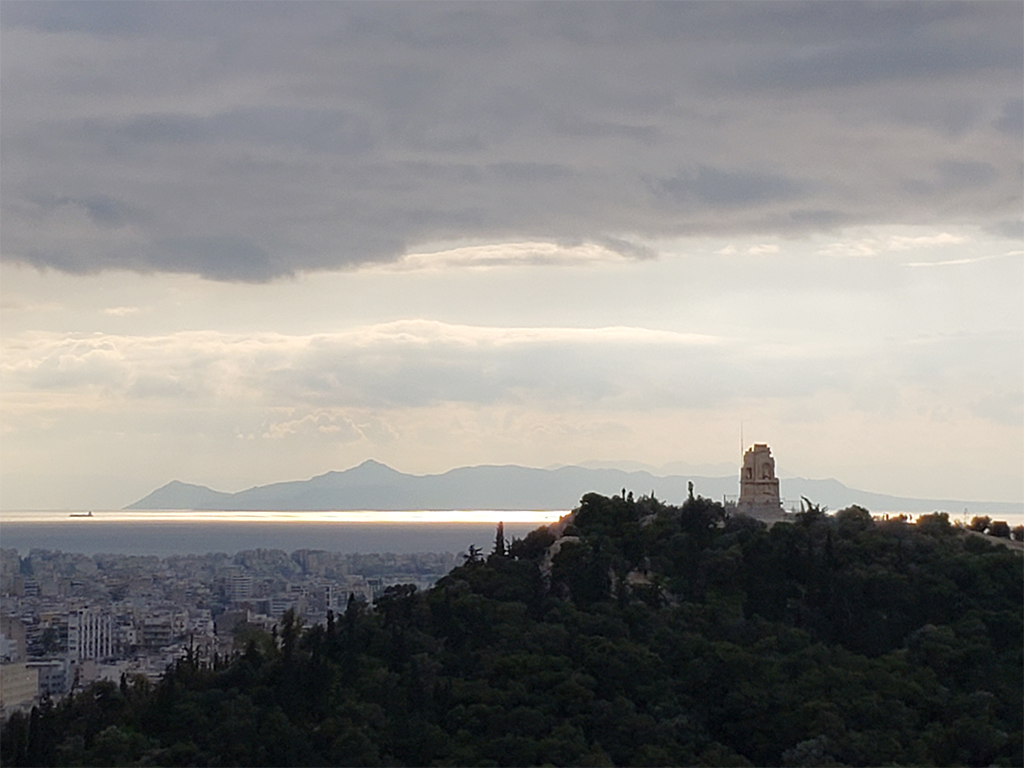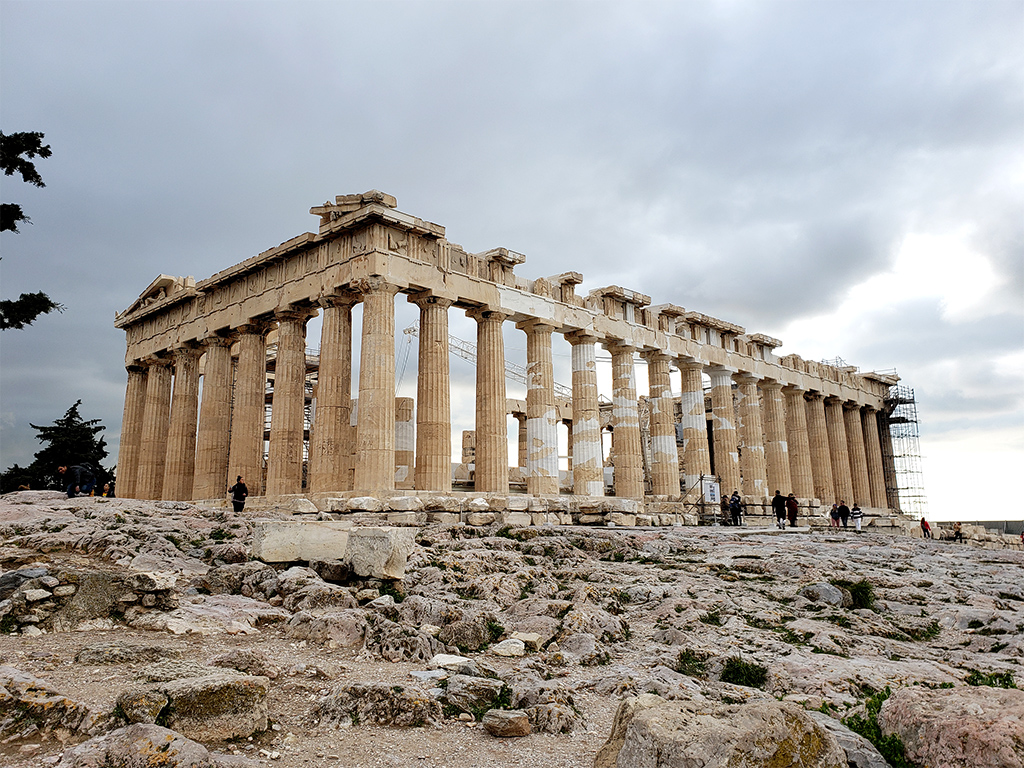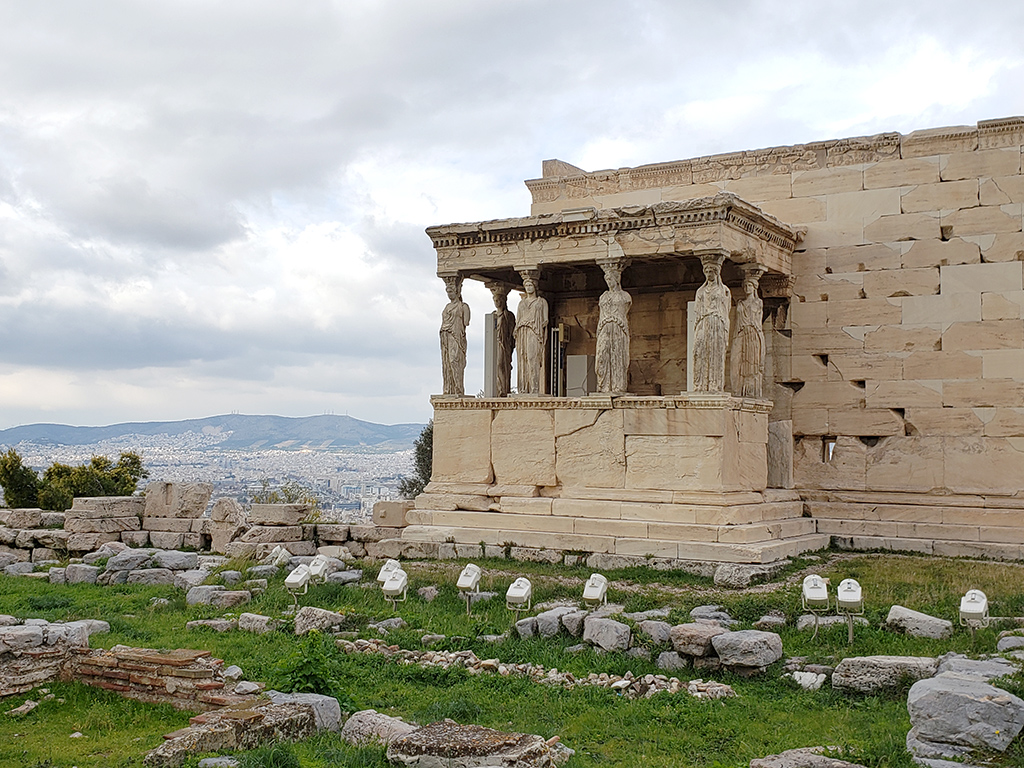
The Acropolis is the most famous symbol of Athens. Lonely Planet modestly describes it as “the most important ancient site in the Western world”. The cluster of marble structures loom over the city on a jagged, rocky outcrop. We got used to seeing the Acropolis from afar for several days before finally making the climb to see it up close.


We visited later in the afternoon, entering through the smaller east gate, which was free of crowds and tour buses. The steepness of the climb ahead became obvious, though the path is pleasant and winding with many photogenic sights to distract from the effort. The first monument we passed was the Odeon of Herodes Atticus.

This marble theatre on the south slope of the Acropolis is many centuries newer than the structures at the top. It was originally constructed in 161 AD by the Roman Herodes Atticus. The theatre was modernized in the 1950s and now hosts events during the Athens and Epidaurus Festival each summer.

The views improved with the altitude; the temperatures did not.


We entered the top of the Acropolis through the Propylaea gateway, passing the Temple of Athena Nike. This temple was constructed around 420 BC to honour the Goddess Athena, who was thought to protect Athens in times of war. The word nike means victory.



Once inside we found ourselves in a barren, rock-strewn landscape. The stone monuments towered above us. The wind was stronger and colder than in the city below, and it reminded me a little bit of my one meager mountain-climbing experience on Ben Nevis in Scotland (though this peak thankfully lacked snow).



The Acropolis also provided great views down on modern Athens. At one point flares shot into the sky and a large cloud of smoke appeared. Some Americans watching with us were alarmed until we all realized simultaneously that it was a soccer game: a goal had been scored and the roar of the crowd reached us a few seconds later.



The weather was blustery and dramatic, with bright sun in one direction and dark clouds in the other. It changed drastically a few times: this photo of the Monument of Philopappos looks very different from the one we took only a few minutes earlier during our climb (above).

But even here we found a hardy Greek cat.

The Parthenon is the largest and most recognizable structure atop the Acropolis. It was constructed beginning in 447 BC, with many revisions in the centuries that followed. It also served as a temple to the Goddess Athena. The friezes of the Parthenon were once decorated with elaborate sculptures.

Some of these sculptures were removed and brought to Britain by Lord Elgin between 1801 and 1812; we saw these so-called Elgin Marbles in the British Museum when we visited in 2016. We saw the rest of the frieze sculptures on display in the Acropolis Museum at the foot of the south slope of the Acropolis. Greece has long considered the Elgin Marbles to be stolen and has lobbied for their return.

One end of the Parthenon is covered in scaffolding, and there is large amount of construction equipment inside it and elsewhere around the Acropolis. Restoration work is necessary to ensure the enormous structures stay upright, and that they are safe to visit. Some of the work also involves undoing previous bad restorations, such as those that pinned stones together with iron rods that have now corroded and caused more damage. The restorations are due to finish in 2020 but time will tell: many Greeks are impatient with how long it has taken to complete the work.

At the easternmost edge of the Acropolis, atop a viewing platform, there is a Greek flag. This flag, visible from much of the city below, is in the location where the Nazis hoisted a swastika flag during their occupation of Greece in 1941. Two Greek teenagers snuck up to the top of the Acropolis, evaded the soldiers on guard and took down the flag before returning safely home. This dangerous act embarrassed the Germans in charge and helped to inspire the Greek resistance movement.

The last monument we passed before heading down was the Erechtheion, another temple, this one dedicated to both Athena and Poseidon.


This structure is most famous for its Porch of the Caryatids (a caryatid is a support column in the form of female figure). All six caryatids here are modern reproductions: five of the originals were removed in the 1970s to protect them from damage and are now on display in the Acropolis Museum nearby. The sixth is in the British Museum, another one of Lord Elgin’s souvenirs that the Greeks would like back.

As we headed back down to the city it was astonishing how much warmer and vibrant everything became.

